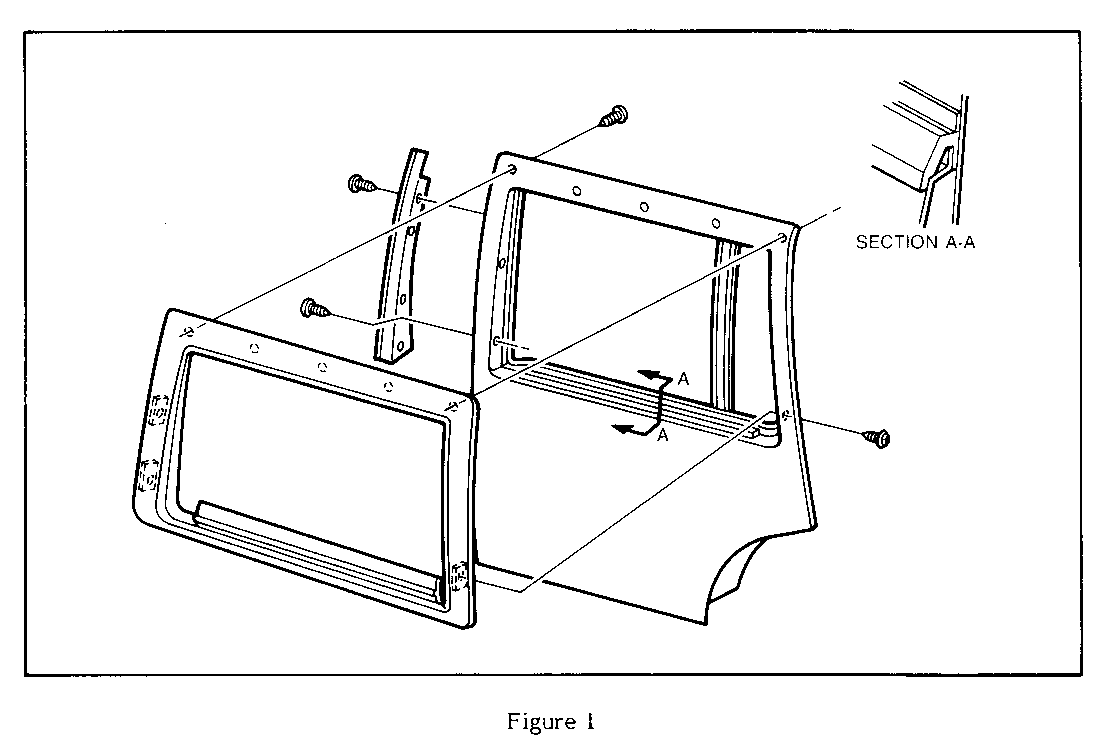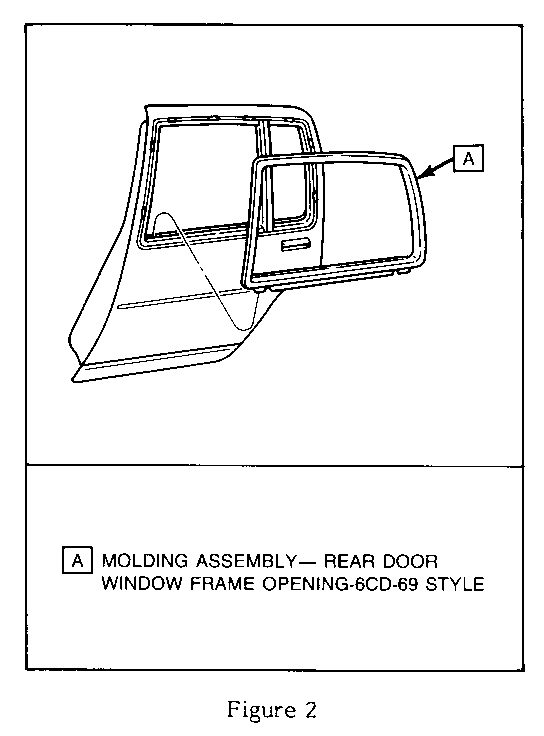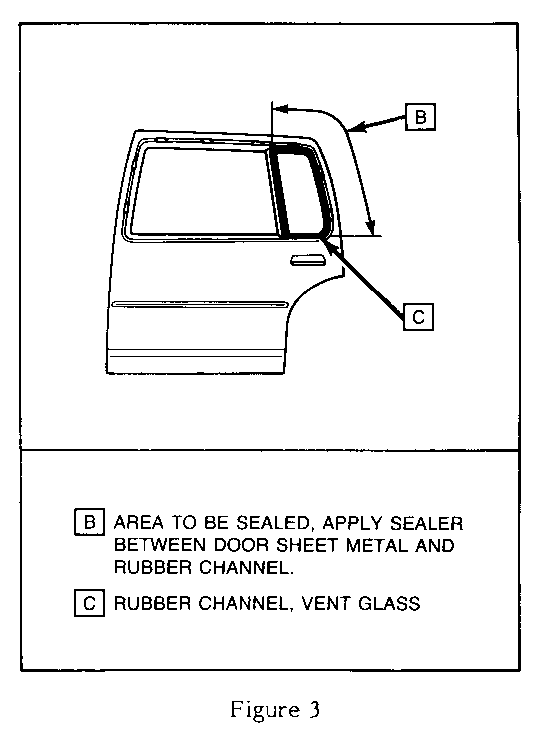RATTLE/WIND NOISE AT REAR DOOR STATIONARY VENT GLASS

MODELS AFFECTED: 1985-1987 DE VILLE AND FLEETWOOD SEDANS
Some 1985-1987 De Ville/Fleetwood four door sedans may experience a rattle and/or wind noise at the rear door stationary vent glass. This may be caused by movement of the rubber channel between the glass and door. Both hard top and vinyl top vehicies can be effected.
Use the following procedure to correct this condition.
1. On vinyl top vehicles the rear door window opening trim is retained with screws on the top, front and rear sides, and clips on the bottom side (refer to Figure 1). The screws can be accessed from the door jam area around the window frame with the door open. One screw on the front side is covered by a vertical molding that can be removed with the door open. With all retaining screws removed, the bottom of the window opening trim can be disengaged from the door by inserting a flat bladed trim removal tool between the door and trim, and prying upward.
On hard top vehicles remove the rear door window opening molding (refer to Figure 2). This molding is retained with clips that can be accessed by removing the press-in rubber lace trim from between the molding and the door on the top, front and rear sides. The lace is bonded to the molding on the bottom side. Do not separate the lace frorn the molding on the bottom side. To disengage the molding from the lower clips, push the molding downward and pull outward (away from the door) at the top.
2. With the rear door window opening molding or trim removed, the rubber channel between the stationary vent glass and the door can be accessed. Use a hardening type body sealant (3M #08501 All-Around Body Sealant or equivalent) to fill any voids between the vent glass rubber channel and door (refer to Figure 3).
3. Allow adequate sealant cure time (per manufacturer's directions). Install the window opening molding or trim by performing the removal procedure listed in step 1 in reverse.
For warranty purposes, use Labor Operation T6201 for .4 hours on the right rear door and T6202 for .4 hours on the left rear door.



General Motors bulletins are intended for use by professional technicians, not a "do-it-yourselfer". They are written to inform those technicians of conditions that may occur on some vehicles, or to provide information that could assist in the proper service of a vehicle. Properly trained technicians have the equipment, tools, safety instructions and know-how to do a job properly and safely. If a condition is described, do not assume that the bulletin applies to your vehicle, or that your vehicle will have that condition. See a General Motors dealer servicing your brand of General Motors vehicle for information on whether your vehicle may benefit from the information.
